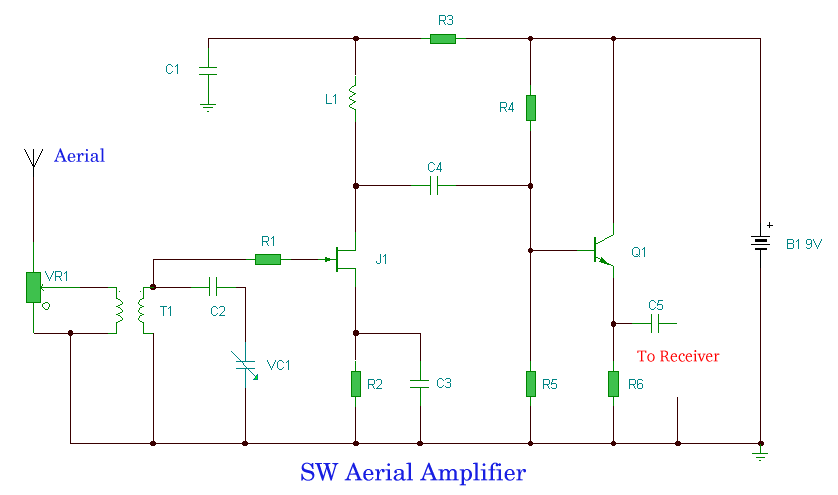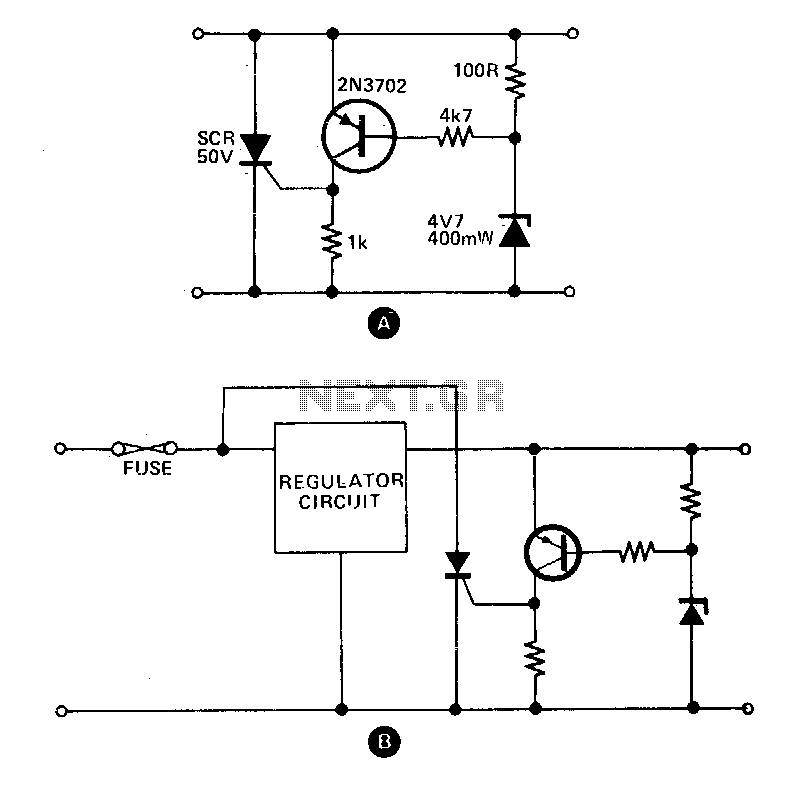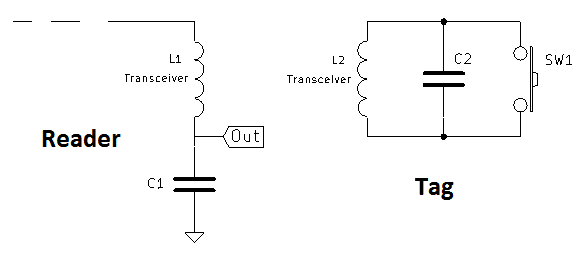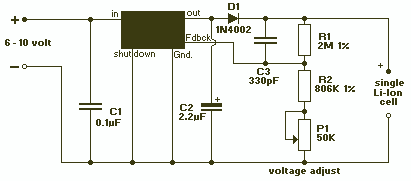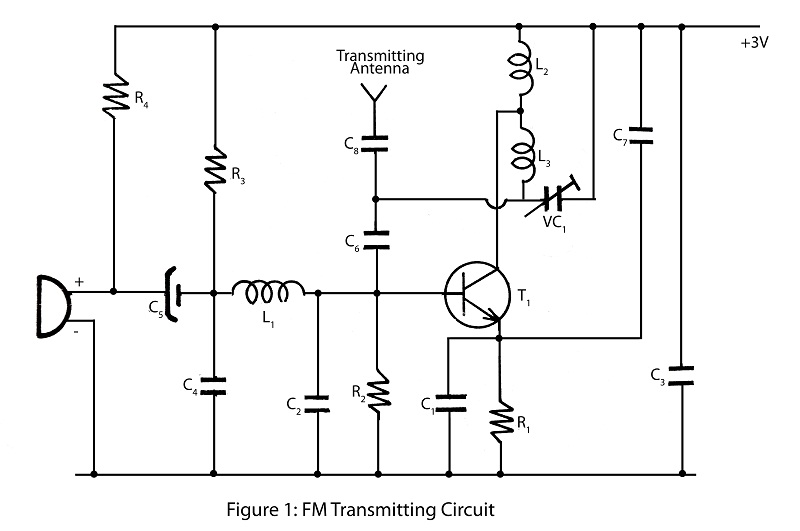
Simple Direct Conversion Receiver
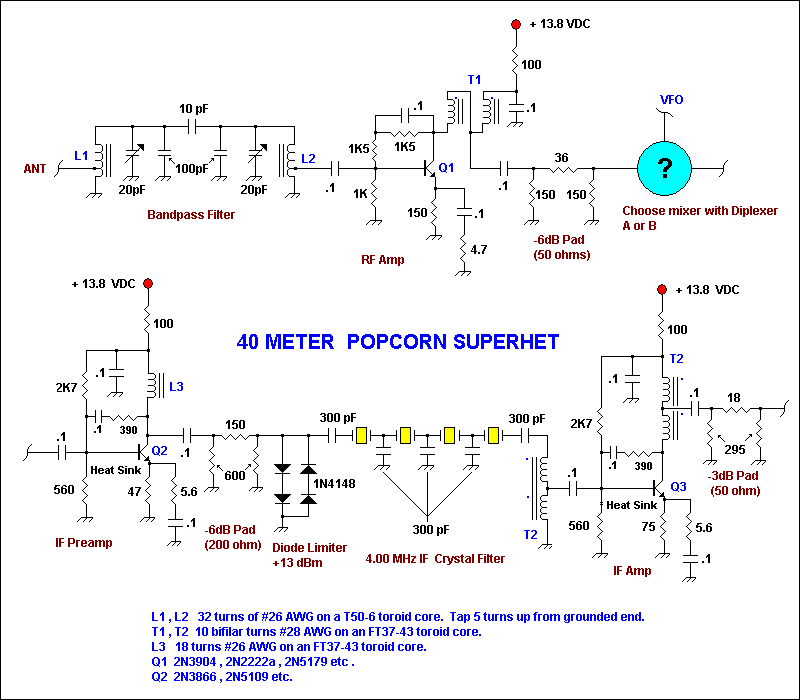
A low-cost continuous wave (CW) superheterodyne receiver operates with a 4.00 MHz intermediate frequency. While there is no automatic gain control (AGC) or RF gain control, the receiver demonstrates good large signal handling capabilities. The design incorporates six bipolar transistors and an operational amplifier (op amp) to provide adequate volume for headphones. The design inspiration for various stages is significantly attributed to Wes Hayward, whose previous work and discussions contributed to this design. If one were to construct the diode ring mixers, this receiver would be a very economical solution, offering performance that exceeds that of any NE602-based superheterodyne receivers previously built or encountered. Below the main schematic, a diplexer diagram is provided, allowing the builder to select from two RF and AF diplexers used to terminate the diode ring mixers. Starting from the 50-ohm receiver antenna jack, a double-tuned bandpass filter designed by Rick Campbell (KK7B) is included and performs effectively. The trimmer capacitors can be sourced from Digi-Key and Mouser, with values ranging from 5 to 20 pF. In the prototype, the fixed-value capacitors were inexpensive monolithic ceramic types purchased from Digi-Key. Rick utilized an NP0 ceramic for the 10 pF coupling capacitor and silver-mica types for the 100 pF capacitors in his original design. For potentially lower insertion loss, it is advisable to use all NPO ceramics for the fixed-value capacitors in this filter. The RF amplifier employed is a favored popcorn RF amplifier, which operates at 50-ohm feedback. A grounded-gate JFET amplifier was also tested and found suitable, eliminating the need for the -6 dB pi attenuator that follows the feedback amplifier in the schematic. The feedback amplifier’s 50-ohm input impedance effectively terminates the bandpass filter. The -6 dB attenuator pad that follows the amplifier helps provide a 50-ohm input impedance for the mixer and reduces stage gain, which aids in preserving the receiver's signal-to-noise ratio. If a builder desires increased sensitivity, the pi attenuation pad can be reduced to -3 dB; however, this may impact the receiver's dynamic range. Transformer T1 is one of two broadband transmission line transformers in the receiver, transforming the 200-ohm collector impedance to 50 ohms for the subsequent stage. A 50-ohm diode ring mixer (7 dBm), such as the Mini Circuits SBL-1 or TUF-1, or a homebrew variant, is suitable. Following the mixer is an RF diplexer of choice. The more complex Bridge-Tee (Q = 1) diplexer (A) is an excellent design, though it may be excessive for a popcorn superheterodyne. For diplexer (A), to achieve the necessary 800 pF for the capacitors, one can parallel a 470 pF with a 330 pF or a 120 pF with a 680 pF capacitor. The inductors at 2.0 µH should be wound on powdered-iron toroids, using #26 AWG wire, requiring 22 turns on a T37-2 core or 20 turns on a T50-2 core. Alternatively, a #6 material toroid can be used for the inductors. This diplexer is discussed elsewhere on the website. The simpler diplexer (B) operates at approximately three times the IF frequency. This basic design is found in many textbooks and articles and provides reasonable matching with a 50-ohm inductive and capacitive reactance. The cutoff frequency was selected at 11.78 MHz, allowing the use of a standard value capacitor (270 pF). To wind the 0.68 µH inductor, 13 turns should be made on a T37-2 toroid or 12 turns on a T50-2 powdered iron toroid core, using 24-26 AWG wire. Except for the inductors, the IF preamplifier and IF amplifier are identical, and both require a small clip-on heat sink due to their current draw. The standing current can be adjusted by changing the 47-ohm and 75-ohm resistors connected to the emitters of Q2 and Q3, respectively. Considerations such as available power supply current versus dynamic range requirements may influence the desired standing current in the IF preamplifier.Low-cost CW superhet receiver with a 4. 00 MHz Intermediate frequency. There is no AGC or RF gain control, however this receiver has good large signal handling capability. This receiver uses just 6 bipolar transistors and an op amp for reasonable volume into headphones. Much of the ideas/design of the various stages must be credited to Wes Hayward as I borrowed heavily from his previous work and through ideas obtained by discussion. If one were to homebrew the diode ring mixers, indeed this would be a very low cost receiver giving reasonable performance which outperforms any NE602 based superhet receivers that I have built or listened to. Below the main schematic is a diplexer diagram that allows the builder to choose from one of two RF and AF diplexers used to terminate the diode ring mixers.
From the 50 ohm receiver antenna jack, first off is a double-tuned band pass filter which was designed by Rick Campbell, KK7B and works very well. The trimmer caps can be the 5 - 20 pF units sold by Digi-key and Mouser. The fixed-value caps in my prototype were inexpensive monolithic ceramic capacitors purchased from Digi-key.
Rick used an NP0 ceramic for the 10 pF coupling cap plus silver-mica type for the 100 pF caps in his original design. For possible lower insertion loss, the probable best/cheapest way would be to use all NPO ceramics for the fixed value caps in this filter.
The RF amp is my favorite popcorn RF amp ; a 50 ohm feedback amp. A grounded-gate JFET amp was tried in its place and was also found to be quite suitable and does not require the -6dB pi attenuator that follows the feedback amp as shown in the schematic. The feedback amp`s 50 ohm input impedance properly terminates the band pass filter. The -6 dB attenuator pad following the amp to helps provide a 50 ohm input impedance for the mixer and to reduce stage gain which aids in preserving the signal to noise ratio of the receiver.
If a builder wants a little more sensitivity, the pi attenuation pad could be reduced to -3 dB however this may effect the receiver dynamic range. The transformer T1 is one of 2 broadband transmission line transformers in this receiver. It transforms the 200 ohm collector impedance to 50 ohms for the succeeding stage. A 50 ohm diode ring mixer (7dBm) such as the Mini Circuits SBL-1 or TUF-1 or homebrew are all suitable.
Following the mixer is an RF diplexer of your choice. The more complex Brifge-Tee ( Q = 1 )diplexer (A) is an excellent design, however maybe overkill in a popcorn superhet such as this. For the (A) diplexer, to get the necessary 800 pF for the capacitors, simply parallel a 470 with a 330 pF or a 120 pF with a 680 pf capacitor.
The inductors at 2. 0 uH are wound on powdered-iron torroids. You can use # 26 AWG wire and it requires 22 turns on a T37-2 core or 20 turns on a T50-2 core. In addition, you can use a #6 material torroid to wind the inductors. This diplexer is described elsewhere on this web site. The simpler (B) diplexer uses a ~3 times the IF frequency that I have seen this basic design in many textbooks and articles and provides reasonable matching with a 50 ohm inductive and capacitive reactance. The cutoff frequency chosen was 11. 78 MHz as this allows the use of a standard value capacitor ( 270pF ). To wind the 0. 68 uH inductor use 13 turns on a T37-2 torroid or 12 turns on a T50-2 powdered iron torroid core. You can easily use 24 - 26 AWG wire for the inductor. Except for the inductors, the IF preamp and IF amp are identical and both warrant a small clip-on heat sink as they draw reasonable current.
The standing current maybe increased or reduced by changing the 47 and 75 ohm resistors connected to the Q2 and Q3 emitter respectively. Factors such as available power supply current versus dynamic range requirements may come into play. One may want to stand more current in the IF preamp and le 🔗 External reference
From the 50 ohm receiver antenna jack, first off is a double-tuned band pass filter which was designed by Rick Campbell, KK7B and works very well. The trimmer caps can be the 5 - 20 pF units sold by Digi-key and Mouser. The fixed-value caps in my prototype were inexpensive monolithic ceramic capacitors purchased from Digi-key.
Rick used an NP0 ceramic for the 10 pF coupling cap plus silver-mica type for the 100 pF caps in his original design. For possible lower insertion loss, the probable best/cheapest way would be to use all NPO ceramics for the fixed value caps in this filter.
The RF amp is my favorite popcorn RF amp ; a 50 ohm feedback amp. A grounded-gate JFET amp was tried in its place and was also found to be quite suitable and does not require the -6dB pi attenuator that follows the feedback amp as shown in the schematic. The feedback amp`s 50 ohm input impedance properly terminates the band pass filter. The -6 dB attenuator pad following the amp to helps provide a 50 ohm input impedance for the mixer and to reduce stage gain which aids in preserving the signal to noise ratio of the receiver.
If a builder wants a little more sensitivity, the pi attenuation pad could be reduced to -3 dB however this may effect the receiver dynamic range. The transformer T1 is one of 2 broadband transmission line transformers in this receiver. It transforms the 200 ohm collector impedance to 50 ohms for the succeeding stage. A 50 ohm diode ring mixer (7dBm) such as the Mini Circuits SBL-1 or TUF-1 or homebrew are all suitable.
Following the mixer is an RF diplexer of your choice. The more complex Brifge-Tee ( Q = 1 )diplexer (A) is an excellent design, however maybe overkill in a popcorn superhet such as this. For the (A) diplexer, to get the necessary 800 pF for the capacitors, simply parallel a 470 with a 330 pF or a 120 pF with a 680 pf capacitor.
The inductors at 2. 0 uH are wound on powdered-iron torroids. You can use # 26 AWG wire and it requires 22 turns on a T37-2 core or 20 turns on a T50-2 core. In addition, you can use a #6 material torroid to wind the inductors. This diplexer is described elsewhere on this web site. The simpler (B) diplexer uses a ~3 times the IF frequency that I have seen this basic design in many textbooks and articles and provides reasonable matching with a 50 ohm inductive and capacitive reactance. The cutoff frequency chosen was 11. 78 MHz as this allows the use of a standard value capacitor ( 270pF ). To wind the 0. 68 uH inductor use 13 turns on a T37-2 torroid or 12 turns on a T50-2 powdered iron torroid core. You can easily use 24 - 26 AWG wire for the inductor. Except for the inductors, the IF preamp and IF amp are identical and both warrant a small clip-on heat sink as they draw reasonable current.
The standing current maybe increased or reduced by changing the 47 and 75 ohm resistors connected to the Q2 and Q3 emitter respectively. Factors such as available power supply current versus dynamic range requirements may come into play. One may want to stand more current in the IF preamp and le 🔗 External reference
